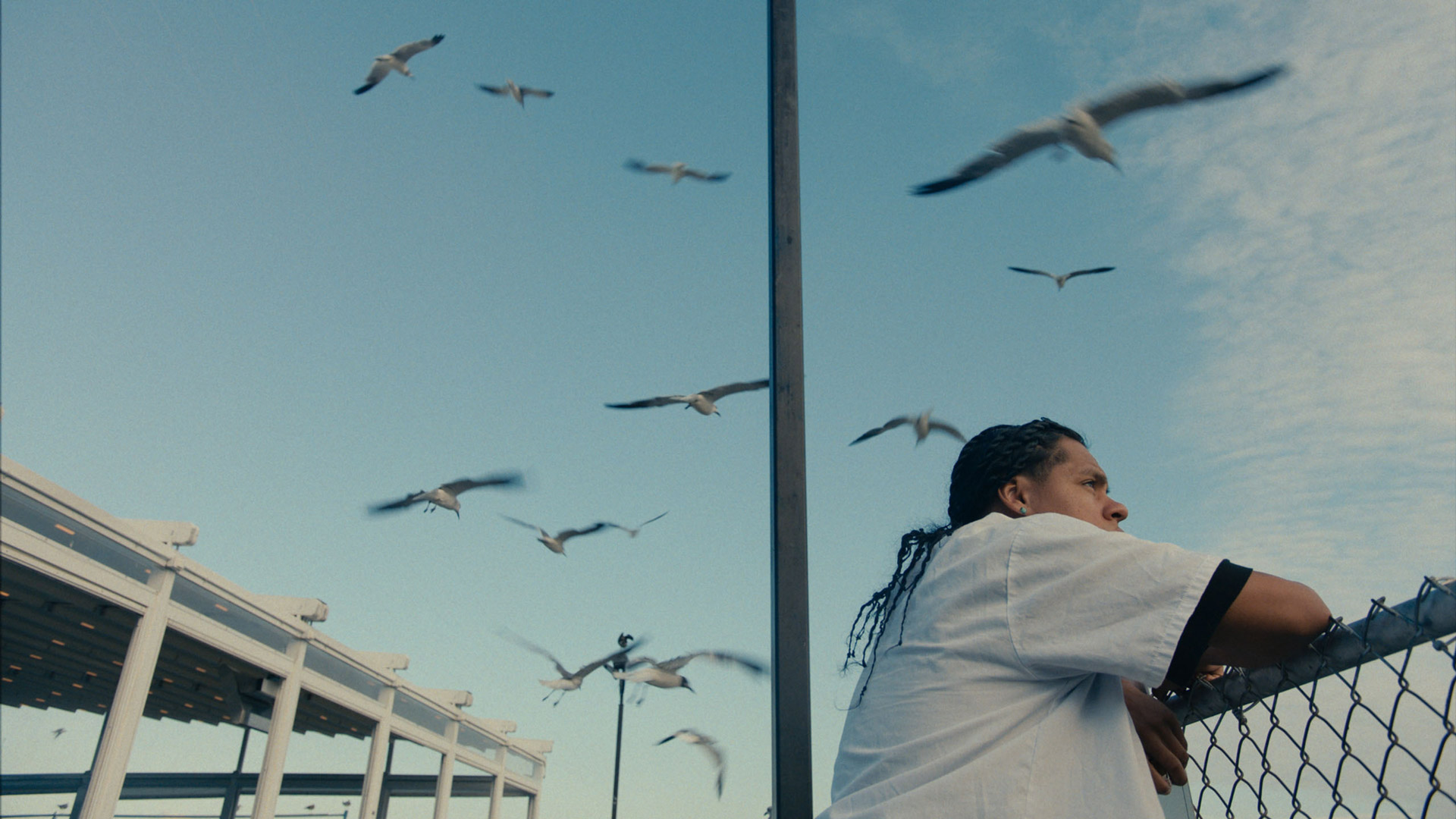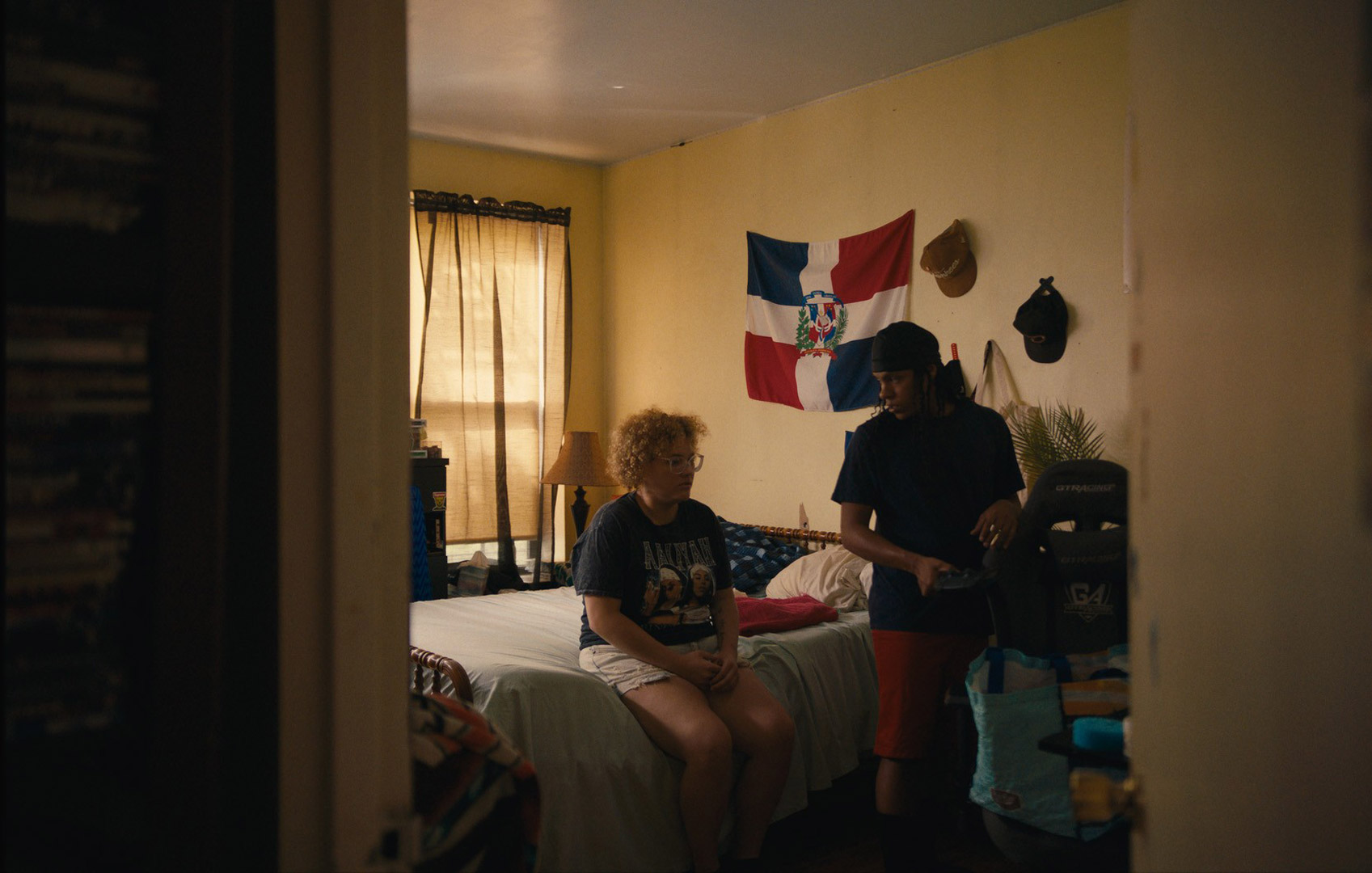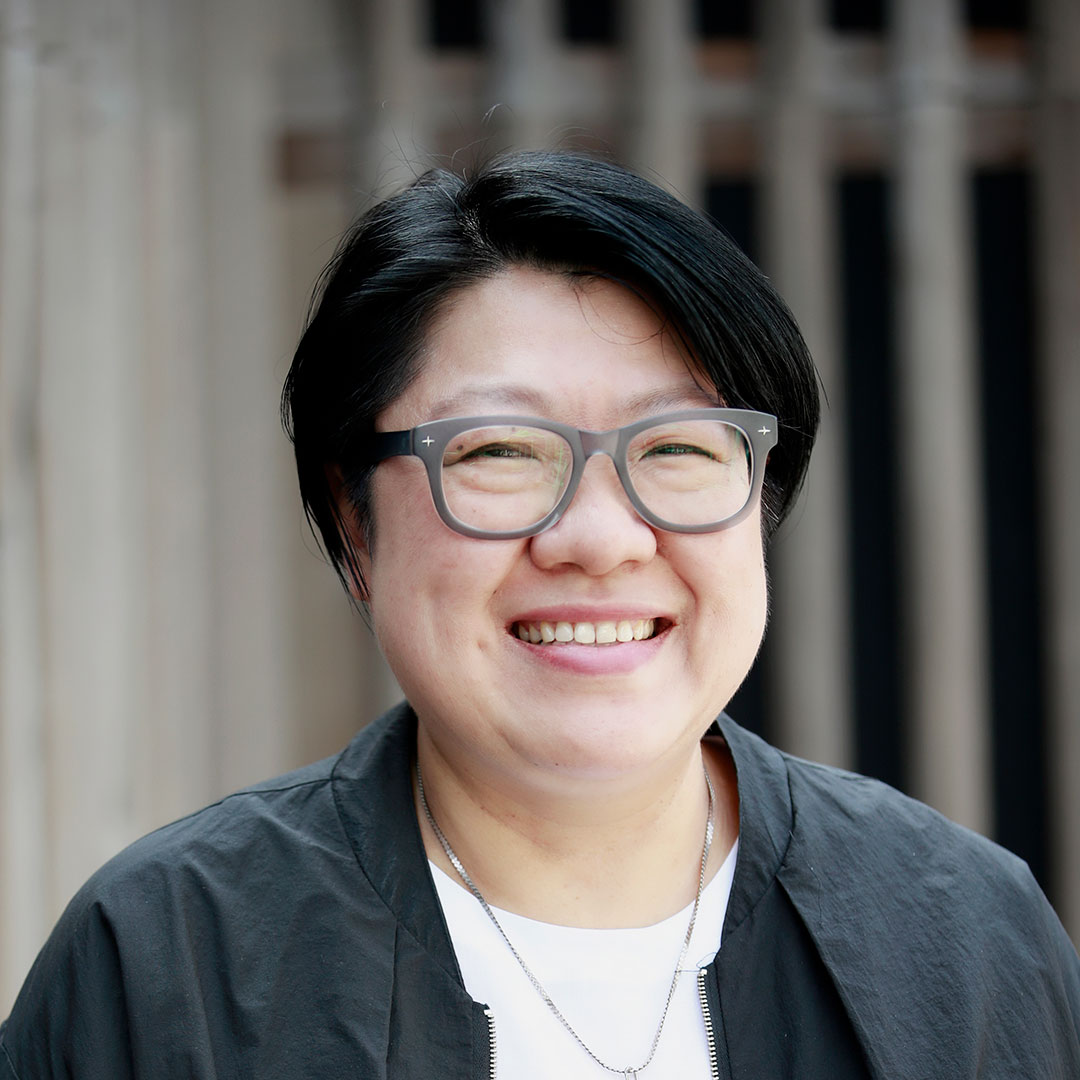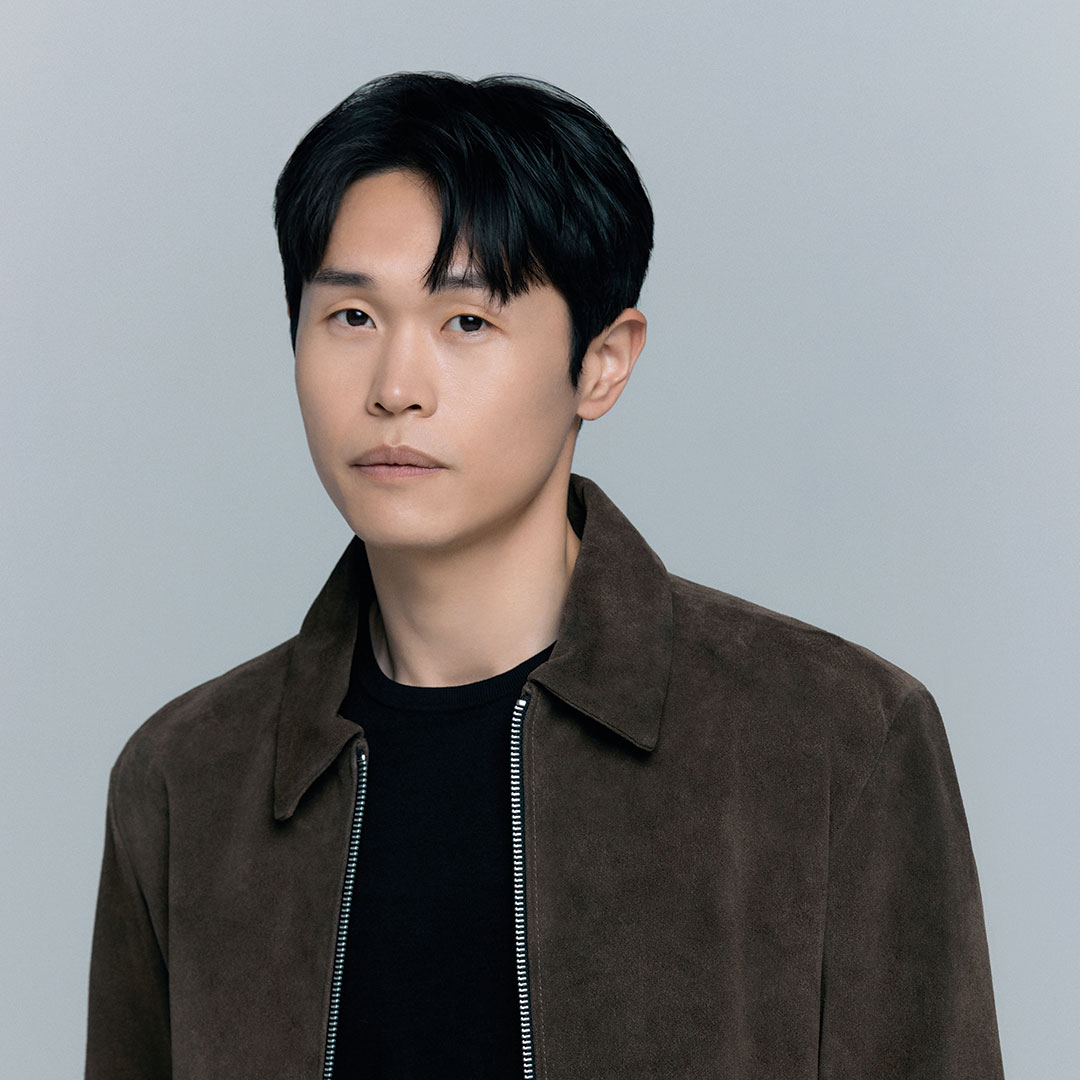갚아야 할 빚이 너무 많다 Mad Bills to Pay (or Destiny, dile que no soy malo)
감독 조엘 알폰소 바르가스 Joel Alfonso VARGAS | United States | 2024 | 99min | Fiction | 국제경쟁 International Competition
Mad Bills to Pay is multi-faceted and can be categorized as a labor, family, and coming-of-age film. I want to start with a question regarding labor in this film. It opens with the subtitle saying, ‘The working man is a sucker.’ One crucial topic this film speaks to is labor. The main character, Rico, is a teenager who does not go to school but works. What made you create such a character? It is interesting to meet a main character whose job crosses legal boundaries. What inspired you to develop a teenage character selling illegally concocted drinks on the beach?
The biggest inspiration for Mad Bills to Pay came from childhood memories of growing up in The Bronx, my family dynamic, the borough’s hustler culture and quotidian textures, the reckless abandon of youth, first loves, and those mad, hot New York City summers. Rico, the character, is an amalgamation of the guys I grew up around, charisma-bombs who often carried the weight of being the “man of the house” in single-parent households way too early. They didn’t have real examples of manhood to look up to, so they were left to figure it out themselves, to navigate adult identities while still very much being children. That tension, between the pressure to “man up” in a place like The Bronx, where masculinity is often tied to survival, and the naïveté of childhood, is really what lies at the heart of the film. My parents, who were teenage parents themselves, were also a big influence on the story.
I ultimately wanted to tell a story about a young man of color navigating masculinity in a landscape dearth of positive male role models, where men are often caught in cycles of generational trauma and are removed from the home or community, whether by choice or systemic forces like the criminal justice system. In the U.S., there’s a real crisis facing young men of color from low-income communities. They’re statistically less likely to finish high school than their female peers, and as research has shown, education levels are tightly linked to issues like teen pregnancy.
Poverty compounds all of this. It places a lot of pressure on young people to take on adult responsibilities before they’re ready. For many young men, this means performing manhood without ever having the space to define it for themselves. Unlike the privileged, who are often granted the freedom to “find themselves” in their twenties, young men of color are too often denied this rite of passage, something we’re only beginning to understand has profound and lasting consequences.
The film is fascinating in that we do not get to see characters going to public offices. A pregnant teenager naturally makes the audience think of abortion. If Rico and Destiny had financial problems in real life, they would have to visit banks or social service centers. However, scenes showing public offices seemed meticulously excluded. Similarly, one day, Rico was caught by police in a subway station. Then, he spent a night in the jail. The audience can only hear about this event but not watch relevant scenes. At another point, he seems to have a doctor’s appointment with Destiny. There is no scene depicting their visit to the hospital. I wonder what led you to make the choices mentioned above.
That’s a really interesting observation. Like with many things in our film, the lack of locations beyond the home and immediate community were in large part a reflection of our resources. We simply didn’t have the budget to shoot in a broader range of spaces. Mad Bills to Pay was made on a very modest budget, with the support and generosity of a lot of kind people who believed in what we were doing.
That said, we did actually film one scene in an abortion clinic, a location generously provided by someone our production manager knew. In that scene the couple meets with a doctor to discuss their options. It’s a really emotional moment where Rico, who initially wants to terminate the pregnancy, ultimately changes his mind and begs Destiny to keep the baby. But in the end, we chose to leave it out of the final cut. We felt it revealed too much too early and risked undermining the emotional complexity of later scenes, like the family dinner, for example.
We really wanted audiences to stay actively engaged with the story, to piece together the emotional and narrative threads on their own rather than being told everything. Plus that clinic scene was the only one shot outside of The Bronx and the family’s home, and it felt a little out of step with the film’s visual and emotional rhythm. By keeping the story grounded in the family’s domestic and local spaces, we were able to highlight how the community and culture functions both as a source of strength and as a source of antagonism. That intimacy gave us room to explore the cultural dynamics more deeply, even within our constraints.
Fight scenes make this film even more fascinating. Rico and his younger sister Sally bitterly fight. Rico and his girlfriend, Destiny, do not hide their conflicts. They yell at each other loudly, screaming and expressing anger at each other. However, no such crashes lead to violent fist fights or uncontrollable abuse, suggesting the film’s affection towards the characters. What led you to include frequent quarrel scenes? The actors’ play was very vivid and almost surprisingly realistic. How did you help them?
This dynamic was largely drawn from my own upbringing, where clashes like the ones in Mad Bills to Pay were a regular part of family life. A lot of it also stems from broader aspects of Latino culture. It’s simply a way we express ourselves. We’re a loud, passionate, and opinionated people. I like to think of it as a kind of ultra-direct communication between very stubborn people. To outsiders, it might seem harsh or even confrontational, but for many of us, it comes from a place of deep care and emotional investment.
As you rightly pointed out, these outbursts rarely escalate to physical violence. I included them in the film because they felt authentic to my own experience, moments where tenderness and calm can turn, almost instantly, into emotional chaos. That volatility, and the way it repeatedly resets the emotional balance within a family felt important to explore.
In terms of helping the actors tap into those moments, I honestly didn’t intervene all that much. I was intentional in casting people whose real lives mirrored those of the characters. The cast come from the community and they’re familiar with these kinds of dynamics. So this style of communication was already very natural and intuitive for them. We did shape some of the arguments during rehearsals, but only loosely. On set, I mostly offered a clear brief and strong, playable objectives for each character, and then gave the actors space to bring their lived experience to the scene and make it their own.
The story is centered around Rico, a soon-to-be father. Except for that, it is difficult to pinpoint where the narrative rises and falls. Such a steady state helps vividly deliver the harsh reality Rico faces. Along the same line, certain events are omitted frequently, with your editing techniques allowing the film to flow rapidly. Even when an event occurs, this film shows no intention or obsession to resolve it in the following scenes. Similarly, the music abruptly ends as the scenes discontinue. What criteria do you use when choosing to deliberately not include some elements in the films?
It was about structuring the film in a more casual way, where events didn’t necessarily unfold in a clear causal chain, as they often do in conventional films. In Mad Bills to Pay, cause doesn’t always beget effect, or if it does, that relationship is often deliberately kept off-screen. We aimed for a narrative structure that mirrored life itself: messy, ordinary, sometimes mundane, and unresolved. More than anything, we wanted the film to feel like a series of vignettes drawn from Rico and his family’s lives.
Our structural guide was observational cinema, fiction, documentary, and everything in between. In my mind was the work of Ulrich Seidl, Pedro Costa, and the jagged, raw rhythms in Maurice Pialat’s films. The goal was to emulate the language of observational cinema: a fragmented, non-causal form where meaning emerges only through the accumulation of disparate moments.
This structure was intentional, it was meant to encourage a more active, critical engagement with the film. We wanted the audience to lean in, to connect the dots, to participate in the storytelling. Mad Bills to Pay was never meant to be a passive viewing experience. We refused to package the lives of these characters and their community into a neat, easily digestible narrative. That would have been a disservice.
The camera usually stays still. It does not chase the characters. Instead, the characters appear to jump into the scenes where your camera points. Also relevant is the fixed height of the camera: the audience often sees waist shots or the upper bodies barely captured on screen. Their gazes are fixed at different places, giving the impression that they are at stake. What made you fix the camera rather casually?
As with much in this film, our choices were driven by both creative and practical needs. From the start, I approached the visual language of Mad Bills to Pay with a static camera in mind, mainly drawing inspiration from observational cinema and street photography. We turned to the works of photographers like Bruce Davidson and Wayne Lawrence, as well as canonical observational films like Ossos (1997)by Pedro Costa for inspiration.
To me, making this film was also an act of preservation. I wanted to capture this community in all its color and specificity, suspended in time through the perspective of young people and against the backdrop of a gentrifying city undergoing rapid change. Who’s to say what the Dominican-American community in The Bronx will look like ten or twenty years from now, or if it will even still be here in the same way? Our visual approach, borrowing heavily from documentary and photographic language, serves as a kind of archival gesture, as a mummification of what feels on the brink of erasure.
Aesthetically we were also interested in the tension between a visually static frame and a mise-en-scène full of movement, energy, and emotional volatility. That contrast became a metaphor for the inertia and limited social mobility experienced by Rico and his struggling family.
Pragmatically, the schedule of our shoot also dictated our form. With over a hundred scenes to capture in just two weeks, we had to move quickly. Limiting ourselves to one setup per scene allowed us to tell an ambitious story efficiently and effectively. Adding more coverage would have risked derailing the production. The choice to shoot at waist level, too, was partly practical. It helped us avoid breaking the fourth wall as when passersby glanced into the lens, it appeared as though they were looking past the camera, therefore preserving the illusion.
Ultimately, these decisions give the film a powerful sense of documentary verisimilitude. I think the absence of traditional coverage compels the viewer to engage with the film more actively, questioning whether what they’re watching is real or staged. That ambiguity, I think, is what makes the visual language of Mad Bills to Pay feel distinct, and helps reframe an otherwise familiar urban story in a new light.
This film is an extended version of the short screened at the Locarno International Film Festival. What changes did you make to the shorts to complete a feature film? What improvements did you aim to make when making a feature?
We approached this process in a rather unconventional way. Typically, when people make short films, they’re either stand-alone pieces or function as a proof-of-concept for a feature that may be developed and made years down the line. In our case we inverted that model, we actually shot the feature first and then cut a short from that same material. This was primarily because we needed to deliver a short film to one of our funding partners.
What initially felt like a tedious or counterintuitive task ended up being pivotal to the feature’s success. The short went on to premiere at Locarno, where it won a prize, and that momentum sparked interest in what we were working on next. Thankfully, we could say that a feature was already in post-production, essentially an expansion of the short. It was one of those rare situations where the stars aligned, and that series of events gave the feature a platform and visibility we might not have otherwise had. We were lucky in that regard.
In terms of the creative process, expanding the short into a feature was relatively straightforward. The short more or less functioned as the first act of the feature so the task was really about building on that foundation and adding the remaining two acts. That said, it did take some time for Irfan (our co-editor) and me to crack the pacing for the full-length version. We were all holding our breath until we saw the first cut, this was the first long-form project for many of us, and there was a real sense of anxiety around whether the material we captured in New York would be enough to sustain a feature-length narrative. Needless to say we were relieved and honestly, buzzing when we realized we had what we needed. That moment of realization gave us the confidence to move forward knowing we had something solid to share with the world.
One might read it as a short allegory regarding masculinity. Rico, the main character, is the only male in the film. It is a story about a boy. He grew up in a home without a father, and his working mom’s income supported him; he suddenly became a father. In the latter part of the film, Rico cuts his long hair and leaves to visit Destiny. Is this ritual, perhaps, a renunciation (or rediscovery, re-perception) of masculinity? The movie may depict the journey of a rambling boy going silent in the end. Please tell us how you wanted to display the transformation of masculinity through the main character, Rico.
Toxic masculinity, or machismo, as we call it in Latinx communities feels like the true antagonist in Mad Bills to Pay. Rico was conceived as a layered and complicated character: someone who genuinely wants to do the right thing, who feels pressured to live up to both societal expectations and his own distorted idea of what it means to be a man. The tragedy is that he lacks the tools, guidance, and emotional maturity to navigate that journey in any meaningful or sustainable way.
A lot of this narrative is rooted in my personal experience, particularly my own relationship with my father, who was absent for much of my childhood and adolescence. In Mad Bills to Pay, I wanted to explore the emotional and psychological consequences of growing up without a father figure, how that absence leaves young men to piece together their sense of masculinity on their own and leaves them susceptible to questionable influences.
In Rico’s case, his struggle is compounded by an unexpected pregnancy that propels his need to grow up much sooner than what he’s ready for. What follows is a series of missteps, painful choices, and self-sabotage, until he ultimately reaches a breaking point. It’s only when Rico finally admits to Destiny (and to himself) that he doesn’t have the answers, that a shift becomes possible. In letting go of the toxic ideals he’s clung on to throughout the film, he begins to find a path toward redemption. Only then does the possibility of a better future emerge, one where Rico can begin to rewrite the story of masculinity and fatherhood on healthier, more vulnerable terms.
The film has two significant events: the mother’s birthday party and the gender reveal party in the latter half. What message did you want to deliver via the contrasts between these two parties?
The two celebrations, as you pointed out, act as mirror images and carry opposing shades of hope. Rico’s mother’s birthday, though celebratory on the surface, is steeped in quiet despair. Despite her tireless dedication, sacrifices, and the sheer weight she carries for her family, she’s lost control of her home, her children, her sense of stability. What little hope remains for a better life, for the promise of the American Dream, is reduced to a scratch-off lottery ticket. That, to me, is heartbreaking and emblematic of the emotional and economic reality so many struggling American families face today.
In contrast, the gender reveal party at the end becomes a symbolic reset, a moment where hope is reawakened. It offers a fleeting but real possibility that things might change, that if Rico and Destiny can get their act together, commit to each other and to showing up as responsible, loving parents, perhaps the trajectory of their lives, and of the family’s future, could shift. Maybe their child, little Riley, or Samson, or Zelda, will indeed one day walk the halls of the University of Pennsylvania and be the one to break the cycle. But that hope remains elusive. Nothing is guaranteed in the world of this film, where contradiction and uncertainty are an organic part of the coming-of-age experience in a place like The Bronx.
Your feature debut has received positive reviews and was critically acclaimed. Many people are looking forward to your next film project. Can you tell us more about your next project?
This is a good question. I have a few things in early development that have to do with the Dominican diasporic communities in both New York and in London, where I currently live, but this is as much as I’m willing to share about it at this time. However, watch this space.









